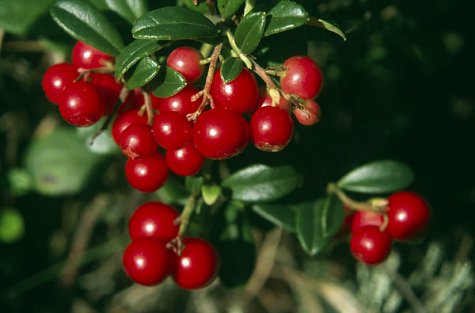Lingonberry picking time
Photo: Arne Ader
Translation: Liis
Lingonberry
Lingonberry; cowberry Harilik pohl Vaccinum vitis-idaea
Lingonberries grow in dry, sparse heath pine forests and moors, preferring drier, sandy soil. Soon the lingonberries in the forest are fully ripe. Going out to pick berries is certainly worthwhile, never mind that the berries remain on the stands until winter. In late autumn lingonberries can have a second flowering.
The evergreen leaves of the lingonberry plant are shiny and leathery on the upper side, lighter on the underside with yellowish gland dots. The leaves stay on the stand for 2 to 4 years.
Lingonberries are connected to each other in the soil. An individual plant grows for 4-5 years, then side shoots are formed from buds on the stem and start growing away from the parent plant. Having grown some tens of centimetres in the soil, a side shoot from the rhizome appears into the light above-ground; from it a new shrub grows for 3-4 years. During this time it already flowers and bears fruits in the autumn. The stems that have borne fruits wither but from the lower part of the plant new upright stems grow, and everything is repeated. Thus a great number of dwarf shrubs develop from one parent plant.
After roughly 15 years the parent plant dies, ceding its place to „youth“. Such a life cycle is characteristic of almost all semi-shrubs.
The bottom berries of the fruit cluster are larger than the tip ones. In autumn birds like to eat lingonberries, spreading the seeds, but propagation by seeds is not important for the lingonberry.
The beautiful berries are delicious, wholesome and keep well thanks to the content of benzoic acid.
So – have a lingonberry picking weekend?









